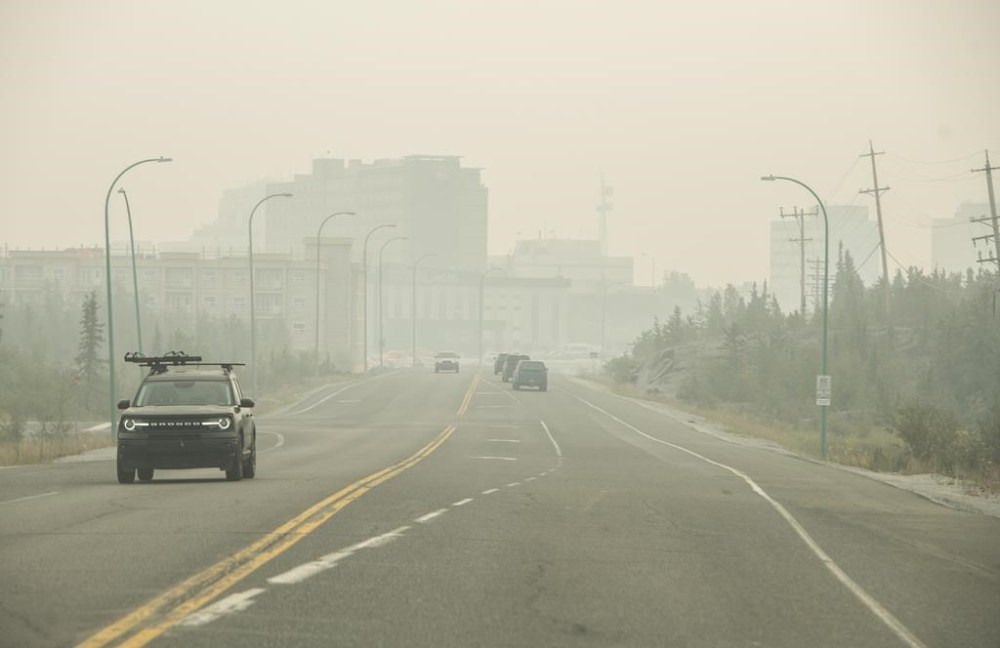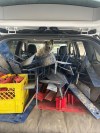First flight of evacuees from NWT wildfires arrives in Winnipeg
Advertisement
Read this article for free:
or
Already have an account? Log in here »
To continue reading, please subscribe:
Monthly Digital Subscription
$1 per week for 24 weeks*
- Enjoy unlimited reading on winnipegfreepress.com
- Read the E-Edition, our digital replica newspaper
- Access News Break, our award-winning app
- Play interactive puzzles
*Billed as $4.00 plus GST every four weeks. After 24 weeks, price increases to the regular rate of $19.00 plus GST every four weeks. Offer available to new and qualified returning subscribers only. Cancel any time.
Monthly Digital Subscription
$4.75/week*
- Enjoy unlimited reading on winnipegfreepress.com
- Read the E-Edition, our digital replica newspaper
- Access News Break, our award-winning app
- Play interactive puzzles
*Billed as $19 plus GST every four weeks. Cancel any time.
To continue reading, please subscribe:
Add Free Press access to your Brandon Sun subscription for only an additional
$1 for the first 4 weeks*
*Your next subscription payment will increase by $1.00 and you will be charged $16.99 plus GST for four weeks. After four weeks, your payment will increase to $23.99 plus GST every four weeks.
Read unlimited articles for free today:
or
Already have an account? Log in here »
Hey there, time traveller!
This article was published 19/08/2023 (784 days ago), so information in it may no longer be current.
The first flight carrying evacuees fleeing wildfires in Northern Canada arrived in Winnipeg Saturday.
“We saw our first flight with evacuees from the Northwest Territories land at Winnipeg Richardson International Airport early this morning — essentially overnight,” Michel Rosset, the airport’s manager of communications, said by phone.
“We are expecting more to come throughout the day, we just don’t know any information yet about specific times.”

Fifteen people were aboard the flight and the province is prepared to welcome as many as 3,000 others, a provincial spokesperson said.
More than 19,000 people left Yellowknife, the territory’s capital, over a 48-hour period, marking one of the largest firefighting mobilizations in region’s history, the Canadian Press reported Friday.
Territorial officials said roughly 15,000 residents fled in vehicles, while another 3,800 left by air.
The Manitoba government is working to accommodate evacuees with support from the airport and Canadian Red Cross, Rosset said.
“It’s very fluid,” he said. “We’re on the ready and we’re prepared to help out in any way we can. We have teams on standby.”
Winnipeg opening ‘doors and hearts’: mayor
The flights arriving in Winnipeg are charter planes flying directly from Yellowknife, Rosset said.
Mayor Scott Gillingham publicly welcomed displaced residents to Winnipeg on social media Friday.
“The devastation in NWT is terrifying, but Canadian cities always have each others’ backs. Winnipeg is opening its doors & hearts to evacuees from (Yellowknife), and we’ll work with the province to coordinate support. Together, we’ll get through this,” he wrote on X, formerly known as Twitter.
Teams from the Red Cross are stationed at local hotels to welcome people as they arrive and to provide “comfort and care” as they get settled, said Leianne Musselman, the organization’s communications director.
“The teams are quite busy today figuring out emerging needs.”
Musselman said the Manitoba Emergency Management Organization, which coordinates wildfire responses with provincial and federal partners, is working closely with territorial officials.
‘Everything is replaceable’
Miguel Letain, who was raised in Manitoba and moved to Yellowknife in 2019, fled the city Wednesday, just hours before government officials issued the evacuation order.
“It was extremely smoky. In the evening, it looked like what you would see in pictures of Mars. It was orange and red and kind of scary looking,” he said, describing the days and hours before the order came down.
“Every single day it was really tense; you couldn’t relax.”
When Letain began smelling the smoke inside his home, he decided it was time to leave.
He and his wife, Gwenan, fled in the afternoon and drove through the night, travelling more than 1,400 kilometres to Edmonton, where they are staying with family.
“There was just a snowball effect. After one person heard someone was leaving, a couple more people would head out. There were quite a few other people who left before the order was given,” he said.
“As I was packing, I realized that when it came down to it there is not a ton of things that I absolutely need to save. Everything is replaceble except for Gwenan, myself and our two cats.”
Letain does not know when they’ll be able to return; they’re waiting for updates from regional officials.
The territorial government on Saturay said 236 wildfires were currently burning in the region, including one outside the capital city. More than two million hectares are affected.
In comparison, only 47 wildfires are burning in Manitoba, with 277 reported this year to date.
British Columbia is similarly experiencing rampant fires. Hundreds of blazes are burning across the province, prompting the provincial government to declare a state of emergency Friday.
Fires deemed out of control are burning on both sides of Lake Okanagan, near Kelowna.
Some 15,000 people have already evacuated their homes, and 20,000 others are under evacuation alerts.
The amount of forest burned by wildfire is projected to double by in Canada by 2050, with longer wildfire seasons, more extreme weather conditions and increased droughts brought on by climate change, according to the Canadian Space Agency.
Canada typically sees about 7,500 wildfires burn around 2.5 million hectares of forest annually.
“This year is a record-breaking wildfire season in Canada. In early August, the number of hectares burned was roughly double what is normally burned during an entire season,” the agency said in a statement.
tyler.searle@freepress.mb.ca

Tyler Searle is a multimedia producer who writes for the Free Press’s city desk. A graduate of Red River College Polytechnic’s creative communications program, he wrote for the Stonewall Teulon Tribune, Selkirk Record and Express Weekly News before joining the paper in 2022. Read more about Tyler.
Every piece of reporting Tyler produces is reviewed by an editing team before it is posted online or published in print — part of the Free Press‘s tradition, since 1872, of producing reliable independent journalism. Read more about Free Press’s history and mandate, and learn how our newsroom operates.
Our newsroom depends on a growing audience of readers to power our journalism. If you are not a paid reader, please consider becoming a subscriber.
Our newsroom depends on its audience of readers to power our journalism. Thank you for your support.
History
Updated on Saturday, August 19, 2023 5:06 PM CDT: Adds latest information.
Updated on Saturday, August 19, 2023 7:54 PM CDT: Adds comment from provincial spokesperson confirming the number of evacuees aboard the first flight and the total number of evacuees expected.








